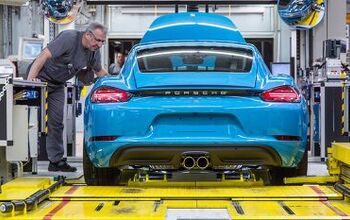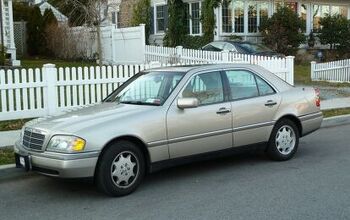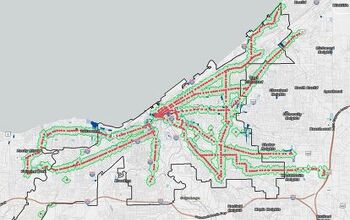Bailout Watch 173: GM's Talking Points for Dealers Re: "Potential Federal Assistance for the Auto Industry"
• The U.S. auto industry has been hard hit by the credit crisis.
o Carmakers can’t get credit to complete their restructurings and put new advanced technology vehicles into production.
o Customers can’t get credit for new cars and other purchases, and consumer confidence has fallen to an all-time low.
o Suppliers are losing business and can’t get credit to keep them afloat until the industry recovers.
o Dealers can’t get credit to finance inventory and other routine business needs.
• Prior to this crisis, the U.S. auto industry was aggressively and successfully restructuring.
o The industry has invested $10 billion in U.S. plants and equipment each year.
o U.S.-based companies have closed the productivity gap with leading imports.
o GM has all but closed the quality gap with Asian carmakers.
o New labor agreements will make U.S. manufacturers’ labor costs competitive with the transplants by 2010.
• GM has been in the process of building a winning auto company for the long term. These efforts are threatened by a severe downturn in sales and a sharp drop in revenue caused by a widespread economic and credit crisis.
o GM is focused on building sustainable success, not short-term results.
o New GM vehicles such as the Saturn Aura, Cadillac CTS, Chevy Malibu and Buick Enclave are getting great reviews from the experts and enthusiastic support from customers.
o GM is committed to leading in the development of advanced propulsion technology, including breakthrough technologies like the Chevy Volt extended-range electric car.
o At the same time GM has been creating these award-winning vehicles, the company has been taking tough action to cut costs. In fact, since 2005, GM has reduced structural cost in North America by over $9 billion. And more recently, GM has outlined plans to enhance its liquidity position by $20 billion through 2007.
o GM has been streamlining its U.S. operations. It has reduced its U.S. salaried workforce from 44,000 in 2000 to 32,000 in the fall of 2008, and its hourly workforce from 132,000 to 64,000 during the same period.
o In response to the recent economic crisis, GM is further tightening its belt. The company recently took additional actions to reduce salaried employment costs by 30 percent, eliminate raises and discretionary bonus for executive and management employees, and suspend the 401k match for salaried employees.
• The long-term security of the U.S. requires a strong auto industry and strong domestic R&D programs.
o The auto industry will play a critical role in diversifying our energy sources away from imported petroleum.
o The U.S. should not trade its dependence on imported oil for a dependence on imports of critical technologies – batteries, biofuel technology, advanced internal combustion engines and transmissions, hybrid systems, and fuel cells.
o The U.S.-based auto industry is second only to the semiconductor industry in R&D spending — $12 billion last year alone.
• Federal assistance to help the U.S.-based carmakers through this historic downturn is a good investment in America’s future.
o Potential cost for supporting loans to the industry would be a fraction of one year’s lost tax revenue should the industry collapse.
o Because of pent-up demand, the industry should recover quickly once the economy improves, implying a fast payback for loans and interest.
o A healthy auto industry is an engine for creating the jobs, the new technologies, and the global business growth that America needs if it is to remain a great power.
• What happens to the U.S. auto industry matters on Main Street.
o There are some 14,000 U.S.-brand dealers in cities and towns across the country , employing approximately 740,000 people, with a total payroll of some $35 billion.
o U.S.-based companies have 105 assembly and component plants in 20 states, including such “non-auto” states as California, Texas, Kansas, Louisiana and Maryland.
o The three companies purchased $156 billion in parts, materials and services, supporting jobs in all 50 states.
o The companies provide benefits for 775,000 retirees and surviving spouses, and provide health care benefits for 2 million.
• Automotive manufacturing is a 21st Century growth industry, and the U.S. needs to earn its share.
o A strong U.S.-based industry lets America benefit from global growth of one of the largest, most important industries.
o Less that 15% of the world’s population owns a car, so growth potential is significant.
o The industry sold 70.6 million vehicles globally in 2007, an increase of 13 million units from 2002.
o U.S. companies can compete: GM’s now sells 61 percent of its car and trucks outside the U.S., and continues to set sales records overseas.
o CYTD, GM sales in LAAM are up 13 percent, while sales in Asia-Pacific are up 7.6 percent.
o Motor vehicles and parts are the single largest export from the U.S., topping aerospace, medical equipment and communications.
• The collapse of the U.S.-based auto industry would be devastating. In just the first year:
o Direct, indirect and spinoff employment would drop by 2.95 million people
o Personal income would drop by $150.7 billion
o Government transfer payments would increase by $14.3 billion
o Social security receipts would drop by $21.1 billon
o Personal income tax paid would drop by $24.7 billion
• This is an auto industry crisis, not just a U.S. industry crisis.
o CAR assumes that a 50 percent drop in production by U.S.-based carmaker would cause a 50 percent drop in production at the transplants due to supplier disruptions and bankruptcies.
o A complete shutdown of the U.S.-based carmakers would also shut down the transplants for at least one year.
More by Robert Farago
Latest Car Reviews
Read moreLatest Product Reviews
Read moreRecent Comments
- Tassos Tim is not that good with colors.The bright "pink" is not pink, but FUCHSIA. Both colors may look good on a woman's sweater, but not on steel panels.
- Tassos While I was a very satisfied owner of a much earlier Accord COupe 5 speed (a 1990 I owned from 1994 to 2016), I don't like the exterior styling of this one so much, in fact the 2017 sedan looks better. Or maybe it sucks in white. The interior of my 1990 was very high quality, this one looks so-so. The 157 k miles were probably easy highway miles. Still, Hondas are not Toyotas, and I remember the same service (like timing belt replacement) back then cost TWICE for an Accord than for a Camry. Add to this that it has the accursed CVT, and it's a no. Not that I am in the market for a cheap econobox anyway.
- 3-On-The-Tree My 2009 C6 corvette in black looks great when it’s all washed and waxed but after driving down my 1.3 mile long dirt road it’s a dust magnet. I like white because dust doesn’t how up easily. Both my current 2021 Tundra and previous 2014 Ford F-150 3.5L Ecobomb are white
- Bd2 Would be sweet on a Telluride.
- Luke42 When will they release a Gladiator 4xe?I don’t care what color it is, but I do care about being able to plug it in.

































Comments
Join the conversation
Here in Canada both Honda and Toyota have there own "in house" parts suppliers, including Engines which Honda makes at there Ontario Plant, so here in Canada at least we dont have to worry about these makers not having parts even if you dont have them in the USA!
It’s the so-called “capitalists” (management and BOD) who have their hand out for gov’t dollars to protect them from the market and their own disastrous decisions. To hand over billions to the same guys who got us in this position is absolute lunacy. Maybe the American auto industry is too big to fail; but if that’s the case they get a bailout on the conditions that upper management and the BOD are all FIRED.